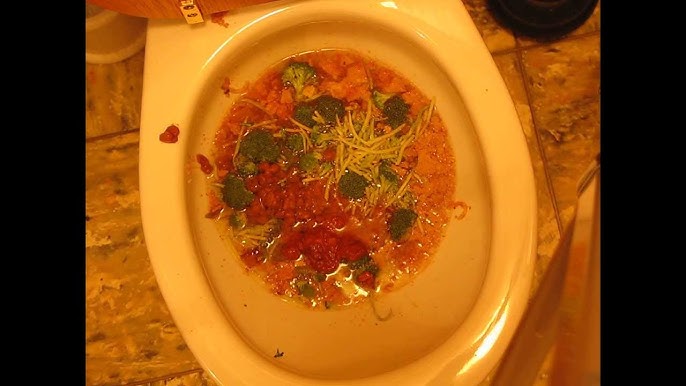Are You Permitted to Flush Food Down the Toilet?
Are You Permitted to Flush Food Down the Toilet?
Blog Article
Do you find yourself searching for facts and techniques about What Can Happen If You Flush Food Down the Toilet??

Introduction
Many people are frequently confronted with the predicament of what to do with food waste, especially when it comes to leftovers or scraps. One usual concern that emerges is whether it's okay to flush food down the toilet. In this post, we'll explore the reasons individuals may take into consideration purging food, the effects of doing so, and different approaches for appropriate disposal.
Reasons people could consider flushing food
Lack of understanding
Some people may not know the potential harm caused by flushing food down the bathroom. They might wrongly think that it's a harmless practice.
Comfort
Purging food down the commode might seem like a quick and easy option to getting rid of undesirable scraps, specifically when there's no neighboring garbage can readily available.
Idleness
Sometimes, people might simply select to flush food out of sheer laziness, without considering the repercussions of their activities.
Effects of flushing food down the toilet
Ecological influence
Food waste that ends up in waterways can contribute to contamination and injury aquatic communities. In addition, the water utilized to flush food can stress water sources.
Pipes problems
Purging food can cause clogged up pipes and drains pipes, creating costly plumbing repair work and inconveniences.
Sorts of food that ought to not be flushed
Fibrous foods
Foods with coarse appearances such as celery or corn husks can obtain entangled in pipes and trigger clogs.
Starchy foods
Starchy foods like pasta and rice can take in water and swell, causing blockages in pipelines.
Oils and fats
Greasy foods like bacon or food preparation oils need to never be flushed down the commode as they can solidify and trigger clogs.
Proper disposal approaches for food waste
Using a waste disposal unit
For homes equipped with waste disposal unit, food scraps can be ground up and flushed with the pipes system. However, not all foods appropriate for disposal in this fashion.
Recycling
Specific food packaging materials can be reused, reducing waste and reducing environmental impact.
Composting
Composting is an eco-friendly means to throw away food waste. Organic materials can be composted and utilized to enrich dirt for horticulture.
The importance of appropriate waste management
Minimizing ecological injury
Proper waste administration practices, such as composting and recycling, assistance decrease air pollution and protect natural deposits for future generations.
Securing plumbing systems
By preventing the method of flushing food down the commode, homeowners can stop pricey pipes repairs and preserve the integrity of their plumbing systems.
Conclusion
To conclude, while it may be tempting to purge food down the commode for convenience, it is essential to recognize the possible repercussions of this action. By taking on appropriate waste administration techniques and taking care of food waste sensibly, people can contribute to healthier plumbing systems and a cleaner environment for all.
FLUSH FOOD DOWN THE TOILET?
FLUSHING FOOD CAN CAUSE BLOCKED DRAINS IN YOUR HOME
All of the plumbing fixtures in your home are connected to the same sewer pipe outside of your home. This outdoor sewer pipe is responsible for transporting all the wastewater from your home to the Council sewer mains. Even small pieces of food that go down the kitchen sink can cause problems for your sewer. It should therefore be obvious that flushing larger bits of food, such as meat, risks a clog in either the toilet itself or the sewer pipes. Flushing greasy food is even more problematic because oil coagulates when it cools, coating the interior lining of your pipes.
THE TOILET IS NOT A BIN
Food isn’t the only thing that people shouldn’t be flushing down the toilet. People use the toilet to dispose of all kinds of things such as tampons, makeup wipes, dental floss, kitty litter and even underwear. Water goes to great lengths to educate residents about the high costs and stress placed on wastewater treatment systems simply from people flushing the wrong stuff down the toilet. It costs taxpayers millions of dollars each year, and homeowners thousands in blocked drain repairs.
FLUSHING FOOD IS A WASTE OF WATER
Flushing food is a waste of our most precious resource - water. In June this year Level 1 water restrictions were introduced to protect water supply from drought conditions. Much of New South Wales continues to be affected by prolonged drought with recent figures revealing up to 97 per cent of the state remains in drought. Depending on whether you have a single or dual flush toilet, every single flush uses between five and 11 litres of water. In the current climate this is a huge amount of water to be wasting on flushing food that should be placed in the bin (or better yet, the compost).
https://www.jabplumbingsolutions.com.au/blog/can-you-flush-food-down-the-toilet

We hope you enjoyed our article about What Can Happen If You Flush Food Down the Toilet?. Thanks for finding the time to read our posting. So long as you liked our page please don't forget to share it. I treasure reading our article about Is it safe to flush food (especially rice) down the toilet?.
Click On This Link Report this page